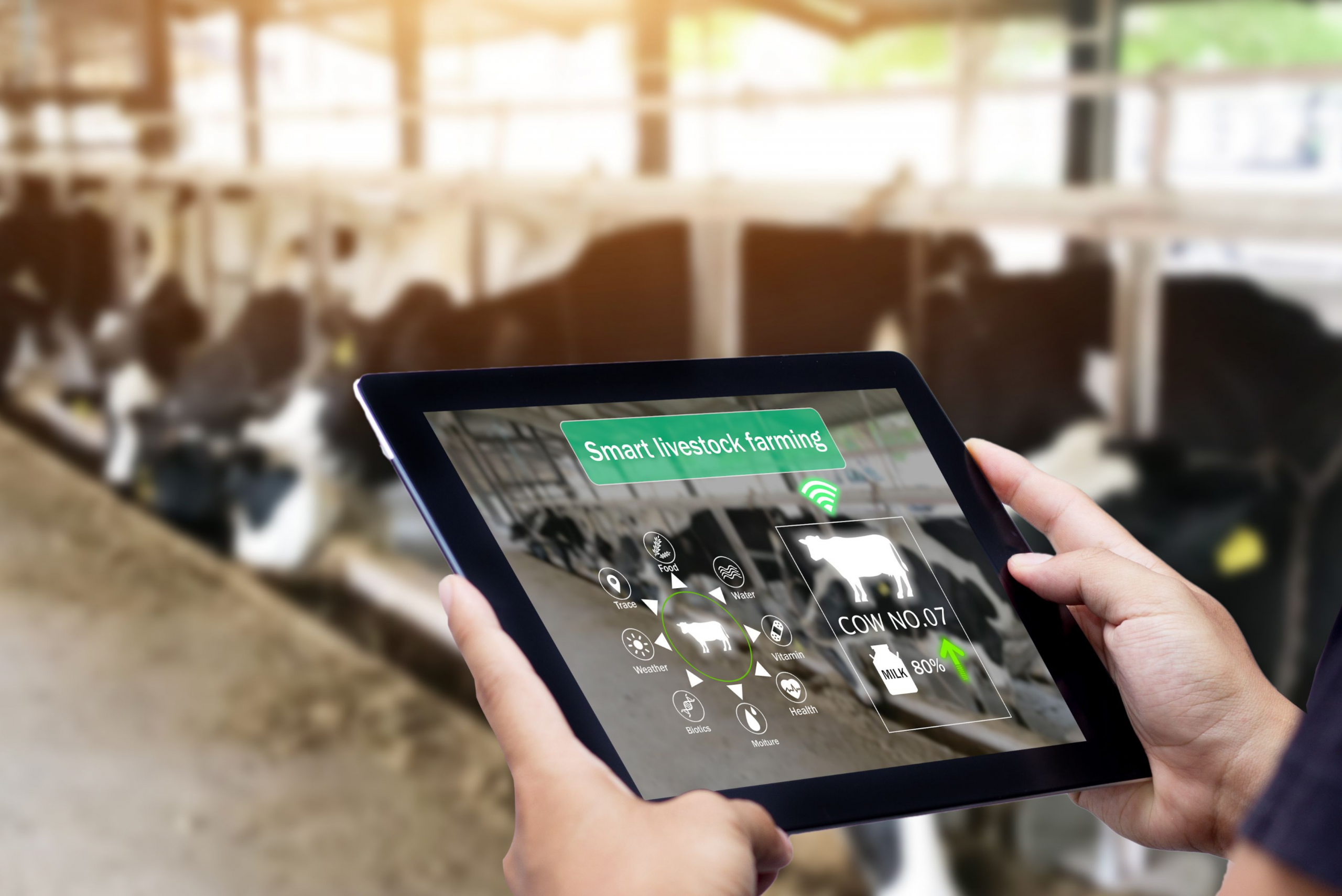What if we told you there is one technological advancement that could gather data about each animal present on your farm?
Hop on to this blog as we unveil a world of endless expansion, production, and rewards for your farm.
Benefits of precision livestock farming
Here are some of the benefits of precision livestock farming:
- PLF uses technology for disease detection and early warning to improve animal health, reproduction, welfare, and impact on the environment
- Precision livestock technologies improve profitability by optimizing resources
- It greatly improves farm scalability and productivity, leading to less need of labour
Technologies used in precision livestock farming
Precision livestock farming technologies, with their constant evolution, show their presence in ample examples. Some of these are:
1. Automated weighing systems
Weight, as we all know it, is an inevitable element when determining animal health and well-being, as a compromised weight may lead to lesser productivity and output. It has various forms:
- Step-on scales for poultry, walk-over sensors for pigs and bovines
- Cameras provide accurate weight measurements with minimal intrusion
- The weight information is used for livestock management and prediction models
2. Recording feed and water intake at a low cost
To monitor the feeding and drinking habits of farm animals, water meters and feed intake sensors are utilized for low-cost recording.
- The collected data provides historical trends and expected levels of feed and water intake
- Changes in habits may indicate unfavourable conditions or illness
3. Imaging solutions
In precision livestock technologies, imaging solutions are an affordable and common form of precision livestock monitoring. They provide a range of data, including weight, behavioural patterns, physiological conditions, growth trends, and environmental elements.
- 3D-camera and thermal imaging analyze livestock health
- They analyze lameness, respiration, temperature, and carcass quality
- Imaging is the first step in precision livestock farming adoption
4. Sensing systems
IoT-connected animal sensing systems utilize accelerometers, pressure, and temperature sensors to monitor animal behaviour, environmental conditions, and health. Sensors can also perform the following activities:
- Detects feeding behaviour, body temperature, and more
- Measure farm and aquaculture variables
- Real-time sensor data combined with historical data detect health issues early
5. Advanced data analytics
Another technology used in raising livestock is advanced data analytics. The data analytics and machine learning capabilities are:
- Large amounts of data are being generated
- The data can be used to address issues related to animal health and farming
Read also: Precision Agriculture Technology: Types, Benefits & Solution for Sustainable Farming
Challenges with precision livestock farming
Below are some of the livestock technology difficulties and potential dangers:
1. Affordability
- One major hurdle is affordability: as integrating expensive PLF technologies on farms can be cost-prohibitive
- While studies have shown that Precision livestock technologies can boost profitability, the unique characteristics of each farm require careful consideration before adopting any technology
2. Automated nature
- The automated nature of PLF systems can also pose risks, as a system failure can have devastating consequences. For instance, inability to perform tasks for some urgent tasks.
- Furthermore, Precision Livestock Farming’s reliance on group measurements can result in individual needs being overlooked, particularly in the case of poultry flocks.
3. Intrusive tags
- Another concern associated with PLF is the use of intrusive tags, which can jeopardize animal welfare. Despite this, many Precision livestock farming practices and technologies still utilize such tags.
An insight into Cattlytics
The Cattlytics app offers a range of benefits and features:
- It gives farmers real-time information regarding cattle health and well-being
- Monitors your cattle movement with greater ease and less effort
- It allows ranchers to promptly respond to their needs and requirements
- Farmers can track and adjust feedings and monitor cattle growth
Conclusion
Precision livestock farming (PLF) uses modern technologies to gather data about each animal, improving farm management and boosting production. Benefits include disease detection, profitability, reduced labour, and scalability. Challenges include affordability, automated risks, and intrusive tags. The Cattlytics app offers health monitoring, weight tracking, and record keeping.





